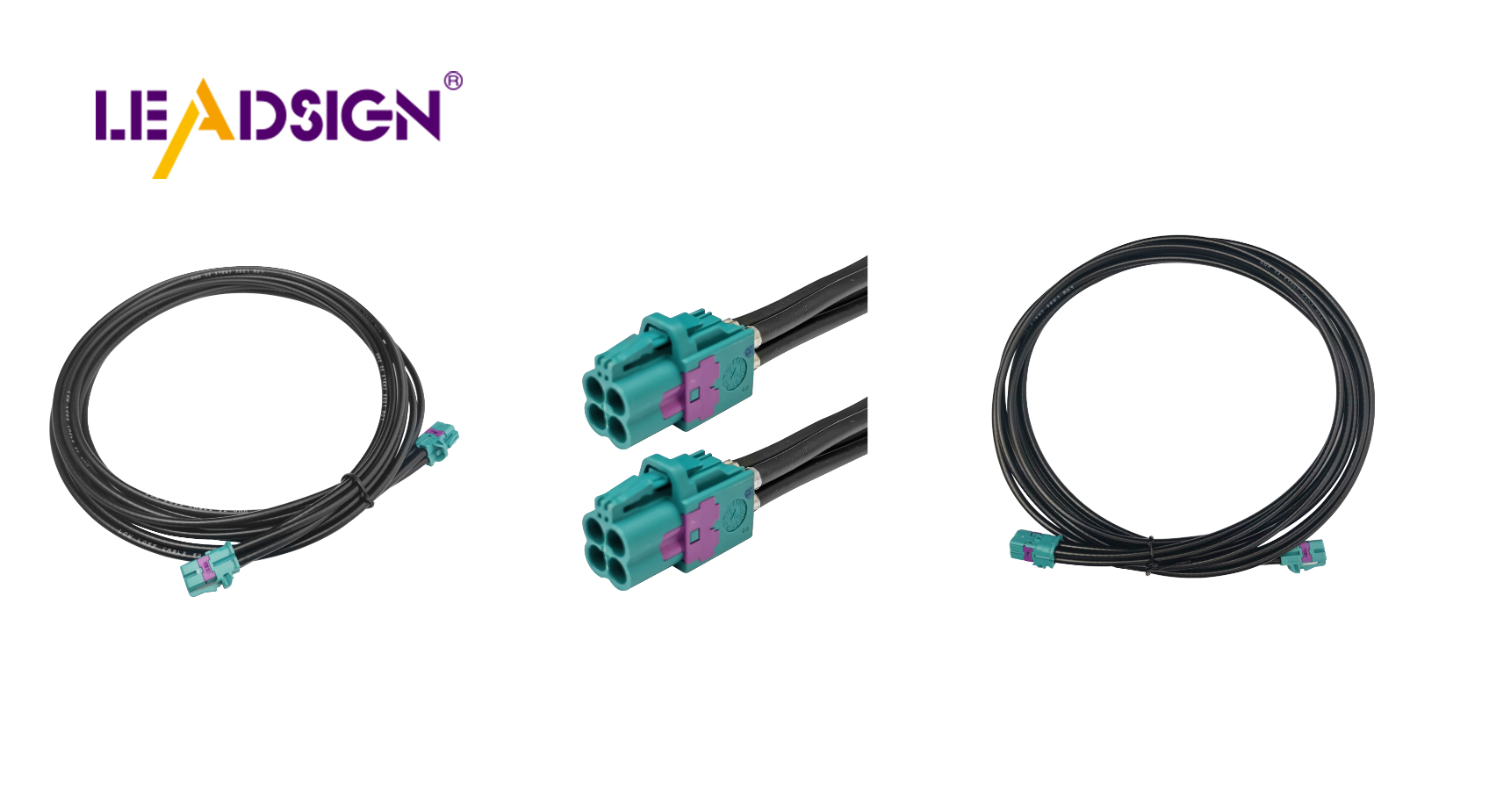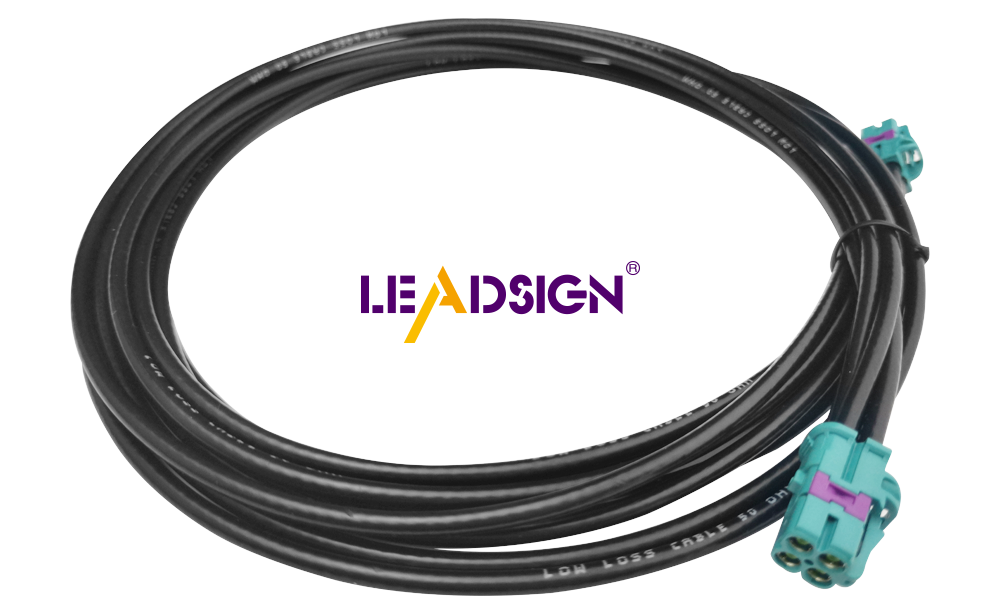Discover Automotive Wiring Connector Types Now

Automotive wiring connector types are crucial for your vehicle. They play a vital role in connecting wires and cables to ensure the safe operation of various systems. Different types of connectors exist for specific purposes, such as joining wires in automotive applications. Connectors can deteriorate over time, leading to issues like poor connections or malfunctions. Regular inspections and maintenance help prevent these problems. One notable type of connector is the Mini FAKRA Connector, known for its compact size and efficient performance, making it ideal for modern vehicles. Understanding the various automotive wiring connector types is essential for maintaining the optimal functionality and reliability of your car.
Evolution and Basic Parts of Car Wiring Connectors
Learning how car wiring connectors changed helps you see their importance. These parts have changed a lot to fit new tech needs.
Early Connectors
At first, car connectors were simple and analog. They connected things like lights and horns. These early connectors often broke easily and didn’t work well.
Modern Changes
Now, connectors are made for digital systems. They handle fast data and more information. This change shows the move from old to new tech for better car performance.
Basic Parts
Knowing the main parts of these connectors is important.
Materials Used
Makers use different materials for strength and good work. Metals like copper help with electricity, while plastics keep them safe. These materials survive tough car conditions.
Design Ideas
Design affects how well connectors work. Size, shape, and easy setup matter a lot. New designs are small but strong, fitting in tight spots without losing power.
By knowing these details, you can understand why car wiring connectors are key to your vehicle’s electrical system.
Introduction to the Mini FAKRA Connector

The Mini FAKRA Connector is special among car connectors. It has new features and uses. This connector changes how cars work, meeting today's tech needs.
Features of the Mini FAKRA
Small Size
The Mini FAKRA Connector is small. It fits in tight spaces in cars. It saves 80% space compared to old connectors. Even though it's small, it works well in tiny areas.
Better Reliability
The Mini FAKRA Connector is very reliable. It helps your car work well. It supports fast data up to 20 GHz and 28 Gbps speeds. This means quick and steady data for new car systems.
Benefits and Uses
Car Industry Use
In cars, the Mini FAKRA Connector is important. It helps with fast data for things like self-driving cars and driver help systems. It's used in cameras and antennas because it handles high frequencies.
Other Possible Uses
Outside of cars, the Mini FAKRA Connector can be used too. Its speed makes it good for wireless systems like cell phones and entertainment setups. It's useful beyond just car connectors.
By learning about the Mini FAKRA Connector's features, you see its role in car tech growth. This connector shows how car wiring parts have changed to meet modern needs.
Comparing Old and New Connectors
When looking at car connectors, it's key to know how Mini FAKRA differs from old ones. This helps you pick the best for your car's wires.
Why Mini FAKRA is Better
Small and Saves Space
Mini FAKRA is tiny. It saves a lot of space compared to old connectors. This means you can fit more parts in small areas. Cars today need this because space is tight. Even though it's small, it still works great.
Works Well and Lasts Long
Mini FAKRA does a good job. It sends data fast, up to 28 Gbps, and handles high frequencies like 20 GHz. This makes it perfect for new car tech like self-driving features. It's also tough and lasts long in rough conditions.
Problems with Old Connectors
Too Big
Old car connectors are often big and bulky. They take up too much room, which limits new car designs. As cars get more advanced, smaller connectors are needed.
Can't Keep Up
Old connectors worked well before but not now. They can't handle today's fast data needs or high frequencies. This can cause problems with how your car works.
By comparing these connectors, you see why Mini FAKRA is popular now. It's better in size, speed, and strength for today's cars.
Installation and Maintenance Tips
How to Install Connectors
Installing car wiring connectors right is important. It makes them last longer. Follow these steps for a good setup.
Tools You Need
To put in car connectors, you need some tools:
Wire cutter
Crimp tool
Soldering tool (if needed)
Heat shrink tube
Multimeter
These tools help make strong connections.
Easy Steps to Follow
Get Wires Ready: Use a wire cutter to take off the cover from wire ends. Make sure the wire is clean and not broken.
Pick the Connector: Choose the right connector for your job. It should fit the wire size and what you need it for.
Connect the Wire: Put the bare wire into the connector. Use a crimp tool to hold it tight. If needed, solder it for extra strength.
Cover It Up: Slide heat shrink tube over the connection. Heat it up so it shrinks and protects the wire.
Check Your Work: Use a multimeter to test if it's working well. Make sure there's no resistance or short circuit.
Follow these steps for a safe and good installation.
Keeping Connectors in Good Shape
Taking care of car connectors stops problems and helps them last longer. Do these things to keep them working well.
Check Them Often
Look at your connectors regularly to find any issues:
Look for wear or damage.
Keep connectors clean from dirt.
Make sure they stay tight and secure.
Checking often helps catch problems early, saving money on repairs later.
Fixing Common Problems
Solve common connector issues with these tips:
Loose Connections: Tighten or re-crimp loose ones to make them secure again.
Rusty Parts: Clean rusty parts with cleaner stuff. Use grease to stop more rust.
Signal Problems: Look for broken wires or bad connectors. Replace anything that's not working right.
By taking care of your connectors, you keep your car's electric system reliable and working well.
Picking the right connector is key for your car's work and trust. The Mini FAKRA Connector is small and fast, great for future plans. As car tech changes, connectors like Mini FAKRA change too. They are more reliable and stop disconnects with special features like CPA. Knowing these helps keep your car up-to-date. Think about these things when choosing connectors for your next car project.
See Also
Essential HSD Connectors in Automotive Technology
Significance of Fakra Connectors in Contemporary Cars
Discovering the Advantages of Fakra Car Connectors

